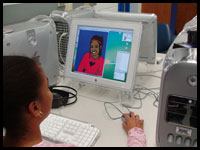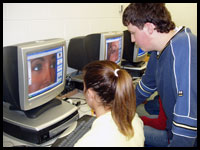 |
Students are attracted to this process because they have “not only something to look at and take ideas from, but also make it their own” (Animation Club Participant.) |
 |
|
|
|||
 Example of a rotoscoped frame from a multi-student collaborative video. Click Here to See Completed Project |
|||
|
|||
| |
|||
©
2008 Karin Gunn. All rights reserved. |
|||||||||